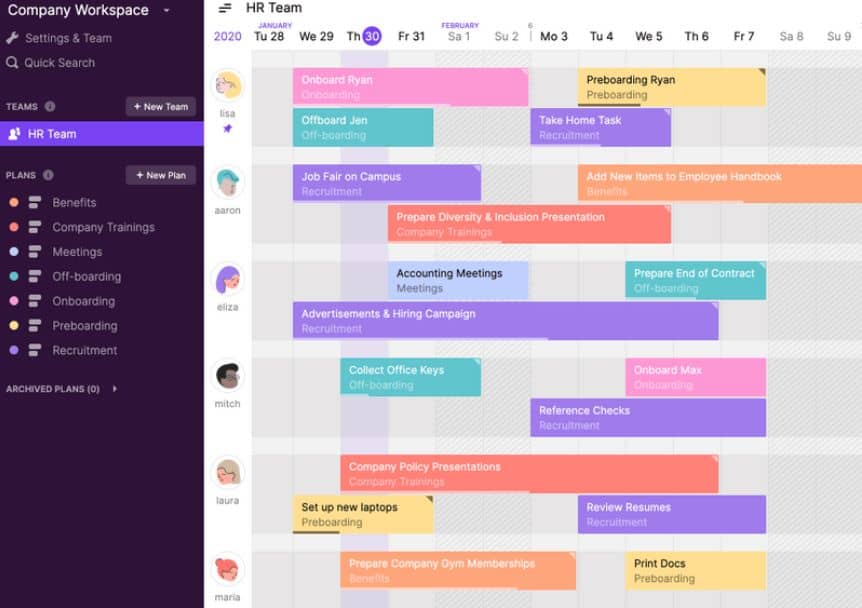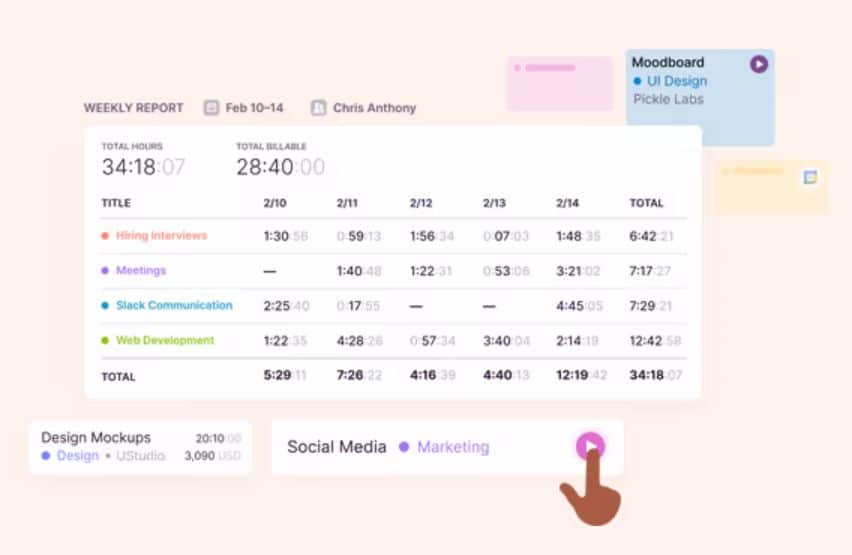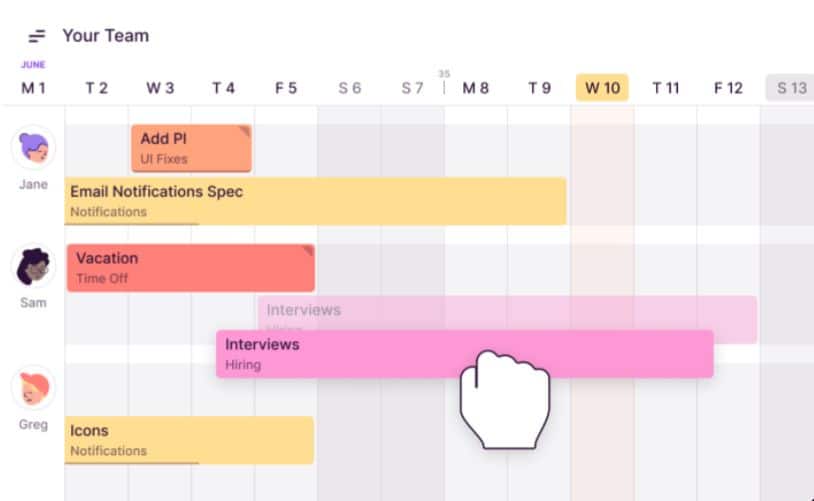Have you ever found yourself hitting a wall at work?
You have so many projects piled up, but you can’t do anything more than stare blankly at your computer screen… overwhelmed with stress and anxiety… unsure of where to even begin.
You just can’t seem to get yourself to focus and get things done.
If this sounds familiar to you, you’re not alone. Workplace burnout is all too common today—75% of workers have experienced it, according to a FlexJobs survey.
And unfortunately, the COVID-19 situation hasn’t helped things. A recent survey by Indeed showed that 67% of workers believe burnout has worsened during the pandemic.
Fortunately, there are steps you can take to prevent burnout. One of them is to work faster.
While working faster may seem like a ticket to more stress, it can actually be a great way to take control of your day and reclaim your free time.
Working more productively (getting more done in fewer hours) can have a positive impact on your mental health. Long working hours are linked with increased risks of anxiety and depression.
If you’re in a results-driven work environment, finishing your work on time means putting it away, switching off, and enjoying a greater work-life balance. It can also mean greater job satisfaction as you meet your KPIs and get better results.
And if your work is project-based, working faster can free up time to take on more projects and increase your revenue.
Here’s how you can work faster and boost your productivity:
7 simple tips on how to work faster and more efficiently
1. Create a plan
The first step in working faster is to plan. For the greatest efficiency, planning should be happening at both an individual and a team level.
Effective work planning can help everyone work faster by:
- Minimizing interruptions
- Coordinating workflows
- Avoiding scheduling conflicts
This might involve creating both a weekly plan and a daily plan.
The weekly plan would typically be the responsibility of a manager. On the other hand, individuals are usually responsible for their own daily plans and to-do lists.
A weekly plan usually includes:
- Meetings
- Time off
- Time blocked for critical projects
- Milestones
- Reminders
A daily plan may include a to-do list of tasks prioritized in order of urgency, with similar tasks grouped together.
Here’s what a week’s work looks like in Toggl Plan:

2. Track progress
Be sure to continuously track your progress and check things off your daily to-do list. This will leave you with a sense of accomplishment as you complete each task.
“Chunking” tasks into smaller pieces will also help fight anxiety. It’s a lot more nerve-wracking to think “I have 10 tasks to complete this week” than “I have one task to complete today.”
If you’re struggling to get ahead on your to-do list, try using the “five more rule.” The rule says that whenever you feel like quitting, you should instead push yourself to complete just five more of whatever you’re doing (five more minutes, five more questions, etc.)
This will help you become more mentally disciplined.
At a team level, managers can hold daily status meetings to make sure everyone’s work is aligned, so each team member can get work done faster. In agile scrum methodology, these meetings are typically short, 15-30 minute sessions where team members report on:
- What they completed yesterday
- What they plan to complete today
- Anything that’s blocking their progress
3. Track time
To optimize your work schedule, it’s important to understand how you’re spending your time.
There’s always the chance that a project might be going way over schedule and over budget. Or perhaps you’ve been spending much longer on a certain task than you need to. The only way to know this for sure is through time tracking.
Time tracking will help you keep projects profitable and create better, more accurate estimates.
Plus, it can also help you work faster. When you know exactly how long a given task should take, you’ll work hard to “beat the clock” and stay within your estimate.
You can easily track your time using Toggl Track’s Timer feature. This feature allows you to organize tasks by client and project, so you can get a better idea of how much time you’re spending on each one.

4. Avoid distractions
When trying to work faster, you need to avoid distractions. Distractions can sap your energy and make tasks take longer than they need to.
Getting distracted by emails and phone calls can lead to a 10-point fall in IQ, and can have the same effect as the loss of a night’s sleep, according to past research conducted at King’s College London.
Some jobs require a significant amount of time devoted to deep work.
The term “deep work” was developed by Cal Newport, a computer science professor at Georgetown University. It’s “the ability to focus without distraction on a cognitively demanding task”, and it allows you to produce better results in less time.
Creative tasks in particular require you to reach a flow state. Some psychologists describe this as a “state of complete immersion in an activity.”
To reach a flow state, you’ll need to block out stretches of uninterrupted time each day. Turn off notifications from apps and websites while working, and avoid checking your emails and messages.
Ideally, try to schedule meetings on certain days of the week or at certain times of the day, so they don’t cause constant interruptions. If a meeting doesn’t strictly need to happen, it’s better to make it an email instead.
A few tips to avoid distractions while working from home: work from a clutter-free, closed room with a desk, and practice asynchronous communication when possible.
Also, turn off your phone or switch to silent mode. Switch off social media, mute desktop notifications, and close applications that you don’t need.
If you’re struggling with background noise from family members or neighbors, try using a white noise app or noise-canceling headphones.
5. Practice time blocking
There are many time management techniques out there designed to help you get more work done, faster. One of these techniques is called “time blocking.”
Time blocking means breaking your day up into short blocks of time, each of which is devoted to a specific task.
It’s a great way to:
- Organize your calendar
- Give yourself time and space for deep work
- Get rid of unnecessary tasks
- Fight perfectionism by giving yourself a fixed amount of time to complete each task
With time blocking, you can fight “Parkinson’s Law”, a classic saying coined by historian and management scholar Cyril Northcote Parkinson in 1955.
Parkinson’s law states that “Work expands to fill the time available for its completion.” If you’ve ever found yourself dragging your feet when working towards a far-off deadline, you know just how true this can be.
There are several variations on time blocking, including timeboxing and the Pomodoro Technique.
Timeboxing is very similar to time blocking. But it includes less flexibility and strict deadlines limiting how much time you can spend on each task.
The Pomodoro Technique, invented by business consultant Francesco Cirillo, is a very granular type of time blocking that involves working in 25-minute intervals separated by short breaks.
6. Practice mindfulness and meditation
Wondering how to work fast in the long term? It’s not enough just to work quickly each day.
You also need to be able to manage stress. Otherwise, you won’t be able to sleep well and recharge, and you may struggle with inefficiency and burnout.
Techniques like mindfulness and meditation can help you relax. Harvard researchers have found that our minds are lost in thought 47% of the time, and these intrusive thoughts can lead to anxiety and depression.
Researchers at Columbia University Medical Center claim meditation can change the structure and function of the brain, blocking out unwanted thoughts while increasing focus and improving attention span. Meditation may increase the brain’s ability to process information, according to research cited by the U.S. National Institutes of Health (NIH).
There are several different types of meditation you could practice:
- Mindfulness meditation is all about focusing on your breathing and being hyper-aware of the sensations you’re experiencing.
- In concentrative meditation, you’ll focus your attention on a particular point (such as a word, a breath, or an object.)
- Some types of meditative relaxation practices, such as yoga and tai chi, involve moving your body in specific ways.
7. Disconnect from work
Sometimes, it’s important to leave work at work. While it may be difficult to put down an urgent project or “let go” at the end of a stressful day, overworking is a one-way ticket to burnout.
Seventy-six percent of respondents to a Korn Ferry survey said stress at work has had a negative impact on their personal relationships. Sixty-six percent said they had lost sleep due to workplace stressors.
And studies have shown that productivity drops sharply after 49 hours of work per week. Working longer hours is not worth it if you want to get things done faster each day.
To avoid burnout and encourage healthy disconnection, avoid overworking yourself (and your team).
If you’re a manager, make sure to monitor your team members’ work schedules and billable hours, so you don’t accidentally end up overscheduling someone with too much work.
It’s also important to take time off and encourage the team to take time off for vacations or public holidays.
To make sure everyone has enough runway and time to do their work, you can use a tool like Toggl Plan to get a clear overview of your team’s schedule, and easily rebalance workloads when needed.

Get work done faster without sacrificing quality
You should now have a better idea of how to work faster without burning out. Productivity methods, concentration, taking care of yourself, and avoiding distractions can all help you find out the quickest way to work.
Time tracking and organized project planning are also key to working faster, especially at a team level.
Remember, productivity is a long game. It’s not just about doing tasks rapidly at the moment, but also finding the most efficient ways to work in the long term.
![Clockify vs Toggl: A Definitive Comparison [January 2024]](https://toggl.com/blog/wp-content/uploads/2023/11/clockify-vs-toggl-track-746x394.jpg)
![Hubstaff vs Time Doctor vs Toggl Track: An In-Depth Comparison [April 2024]](https://toggl.com/blog/wp-content/uploads/2024/04/hubstaff-timedoctor-track-673x404.jpg)
